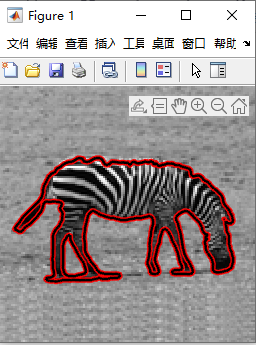1.问题描述:
2.部分程序:
function D = sussman(D, dt)
% SUSSMAN(D, dt) Corrects distance function so that it maintains |Dt| = 1
% (slope of 1) using method presented in Sussman "Level Set Approach in
% Two-Phase Flow":
%
% G(D) = sqrt( max[(a+)^2, (b-)^2] + max[(c+)^2, (d-)^2] ) - 1 if D > 0
% = sqrt( max[(a-)^2, (b+)^2] + max[(c-)^2, (d+)^2] ) - 1 if D < 0
% = 0 otherwise
%
% Applies one iteration of:
% Dt+1 = Dt - dt * S(D)*G(D)
% forward/backward differences
a = D - shiftR(D); % backward
b = shiftL(D) - D; % forward
c = D - shiftD(D); % backward
d = shiftU(D) - D; % forward
% setup defaults for the positive and negative filtered versions
a_p = a; a_n = a; % a+ and a-
b_p = b; b_n = b;
c_p = c; c_n = c;
d_p = d; d_n = d;
% positive ones are defined as having only those values that are
% positive, otherwise zero, for example:
% a_p(i,j) = a_p(i,j) if a_p(i,j) > 0
% = 0 otherwise
a_p(find(a < 0)) = 0;
a_n(find(a > 0)) = 0;
b_p(find(b < 0)) = 0;
b_n(find(b > 0)) = 0;
c_p(find(c < 0)) = 0;
c_n(find(c > 0)) = 0;
d_p(find(d < 0)) = 0;
d_n(find(d > 0)) = 0;
dD = zeros(size(D));
D_neg_ind = find(D < 0);
D_pos_ind = find(D > 0);
dD(D_pos_ind) = sqrt(max(a_p(D_pos_ind).^2, b_n(D_pos_ind).^2) ...
+ max(c_p(D_pos_ind).^2, d_n(D_pos_ind).^2)) - 1;
dD(D_neg_ind) = sqrt(max(a_n(D_neg_ind).^2, b_p(D_neg_ind).^2) ...
+ max(c_n(D_neg_ind).^2, d_p(D_neg_ind).^2)) - 1;
D = D - dt .* sussman_sign(D) .* dD;
3.仿真结论:

C-77







 该博客介绍了一种非常有效的不规则目标边缘提取算法,基于Sussman的Level Set Approach。程序中展示了算法的实现细节,包括前后向差分、滤波处理以及距离函数的校正。通过迭代更新,确保了距离函数的斜率为1。仿真结果显示算法能够准确地提取图像边缘。
该博客介绍了一种非常有效的不规则目标边缘提取算法,基于Sussman的Level Set Approach。程序中展示了算法的实现细节,包括前后向差分、滤波处理以及距离函数的校正。通过迭代更新,确保了距离函数的斜率为1。仿真结果显示算法能够准确地提取图像边缘。

















 192
192

 被折叠的 条评论
为什么被折叠?
被折叠的 条评论
为什么被折叠?










